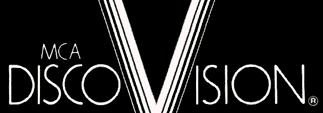|
It's something nobody really wants, but it now seems certain to happen: three different videodisc systems on the market, each one backed by a consortium of giant corporations -all mutually exclusive. There are few who believe that more than one will ultimately survive.
The latest system to be scheduled for production is the VHD (for Video High Density), developed by the Victor Company of Japan, known in the United States as JVC. This system, technically a "grooveless capacitance" system, is backed by the giant Matsushita Electric Industrial Corporation, which owns 51 percent of JVC and all of Panasonic and Quasar in the United States. In a significant move, JVC has licensed Thorn -EMI of England to produce players and discs -significant because Thorn -EMI, in turn, owns Capitol Records in America. Matsushita and JVC both say they will produce players for the U.S. market by late 1981, with the latter aiming for a $500 price tag.
The other two systems are also bankrolled by huge corporations. The VLP /DiscoVision system, using the "grooveless optical" technique, was developed by Philips of the Netherlands (the only consumer -electronics manufacturer bigger than Matsushita) and MCA Inc., the show -business colossus that owns Universal Pictures as well as several record labels. Magnavision players for the system, assembled by Magnavox (a Philips subsidiary), have been on sale in the United States in relatively small quantities since the end of 1978. A different player, which can play the same discs, goes on the market here under the Pioneer brand name this summer; it's being made by a Japanese company owned jointly by Pioneer, IBM and MCA. Then there's Sony, which will also make VLP players, primarily for the industrial and educational markets. Discs are made by a joint IBM -MCA corporation and sold primarily by MCA, although Philips, Sony and 3M plan to press discs for this system, too. The Magnavision player sells for $775, the Pioneer for $749.
Scheduled for nationwide marketing early in 1981 is a "grooved capacitance" system developed by RCA, which will use the SelectaVision Videodisc trade name. RCA will make the first players and discs, with Zenith tooling up to make players and CBS to make discs further down the line. Note that RCA and Zenith are America's two largest television -set manufacturers, with more than 40 percent of the color -TV market; their disc players will retail for under $500.
Each of these blue -chip corporations is investing millions in the videodisc, which is said to have a potential at least as large as television itself. And they're catapulting themselves headlong toward a three -way collision. Not only can players for any one system not accommodate discs made for either of the others, but the systems are so completely different in principle and mechanical specifications that it would be impossible to design a player to accommodate any two types -let alone all three. In other words, it's not your everyday 33- vs.- 45- vs. -78 -rpm battle.
Not surprisingly, the players vary in features. The optical system (Philips- MCA -Pioneer) is the most versatile, and also the most expensive, providing such special effects as freeze frame, slow- and fast -motion, backward play and random access (or rapid location of any part of the program) on some records. The grooveless capacitance system of JVC and Matsushita has several of these features, and the rest can be added as special accessories. The initial version of the RCA -developed grooved system is designed to play discs at normal speed only, but does have a scan system for location of any desired program segment. This model will lack stereo sound, a feature available on the other players (which must be plugged into a stereo amplifier for stereo listening, of course).
In the final analysis, it won't be the features of any specific system that determine its success, but the amount and quality of recorded programming available for it, since a videodisc player cannot record, but is designed only to play back prerecorded programs (in the same way a phonograph plays audio records). So proponents of all three are furiously signing up programs. Most independent program producers are being careful not to make any exclusive deals, so they can go with all three if necessary to be certain of picking a winner. Therefore, much of the same programming probably will be available for all three systems, at least at the start. But it certainly would be foolish to expect to buy a Universal feature movie on a VHD disc or a Columbia Records artist's video album on DiscoVision.
Those members of the consumer - electronics and record -manufacturing industries who are still uncommitted are rather somberly contemplating the splintering of this potentially huge market -and wondering whether it can even survive such an embarrassment of riches.
Record dealers, who are being counted on to sell the discs, are becoming somewhat less enchanted with the idea of see -hear records as they learn they're going to be required to stock everything in triplicate -an extremely costly proposition. And when the barrage of advertising for all three systems hits the fan, the buying public could become so confused that it decides to hold off entirely until the dust settles.
So you can look forward to a period of systems anarchy in the exciting new world of videodiscs. One of three (assuming there are no late entries) eventually is expected to win the support of the marketplace. The public will be asked to vote. With green ballots.
|
